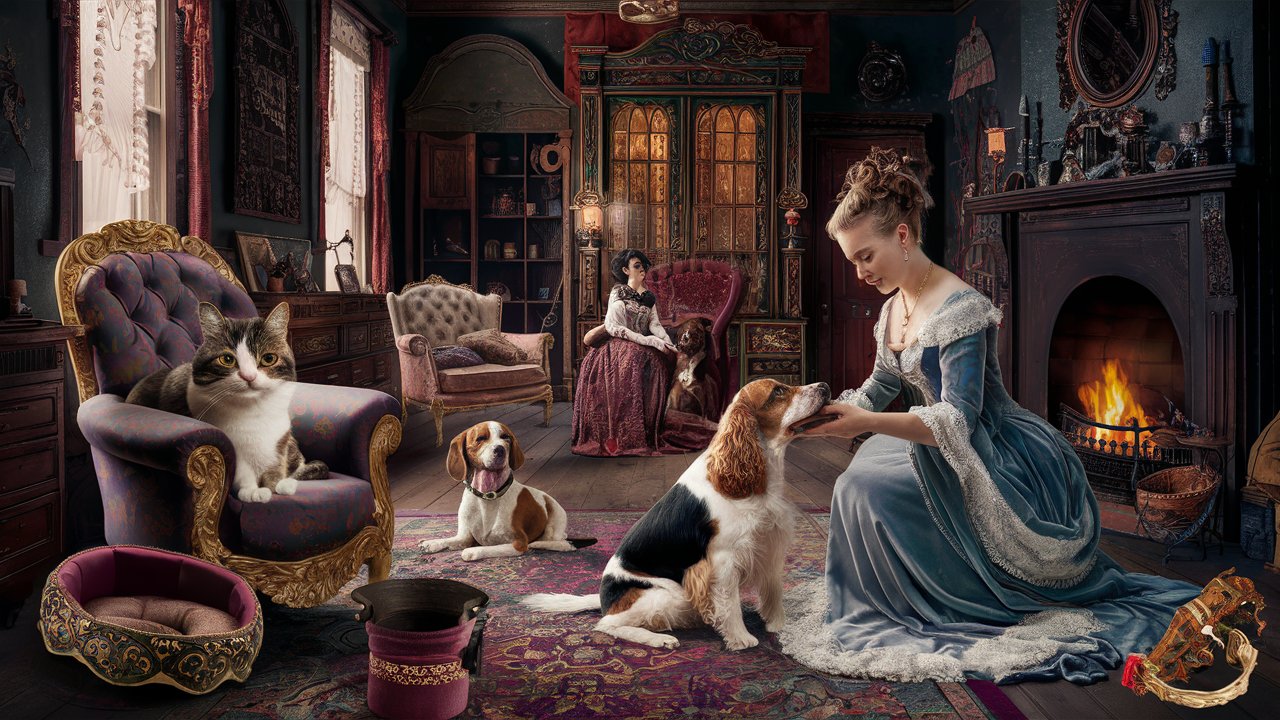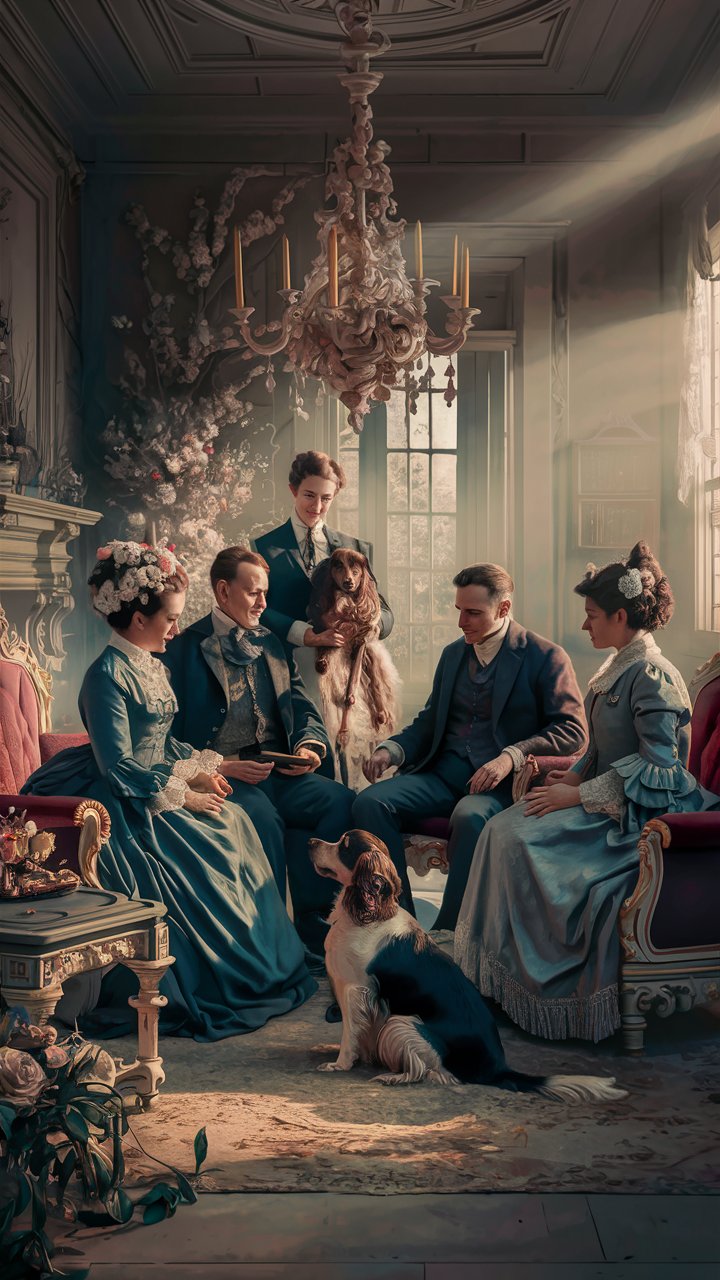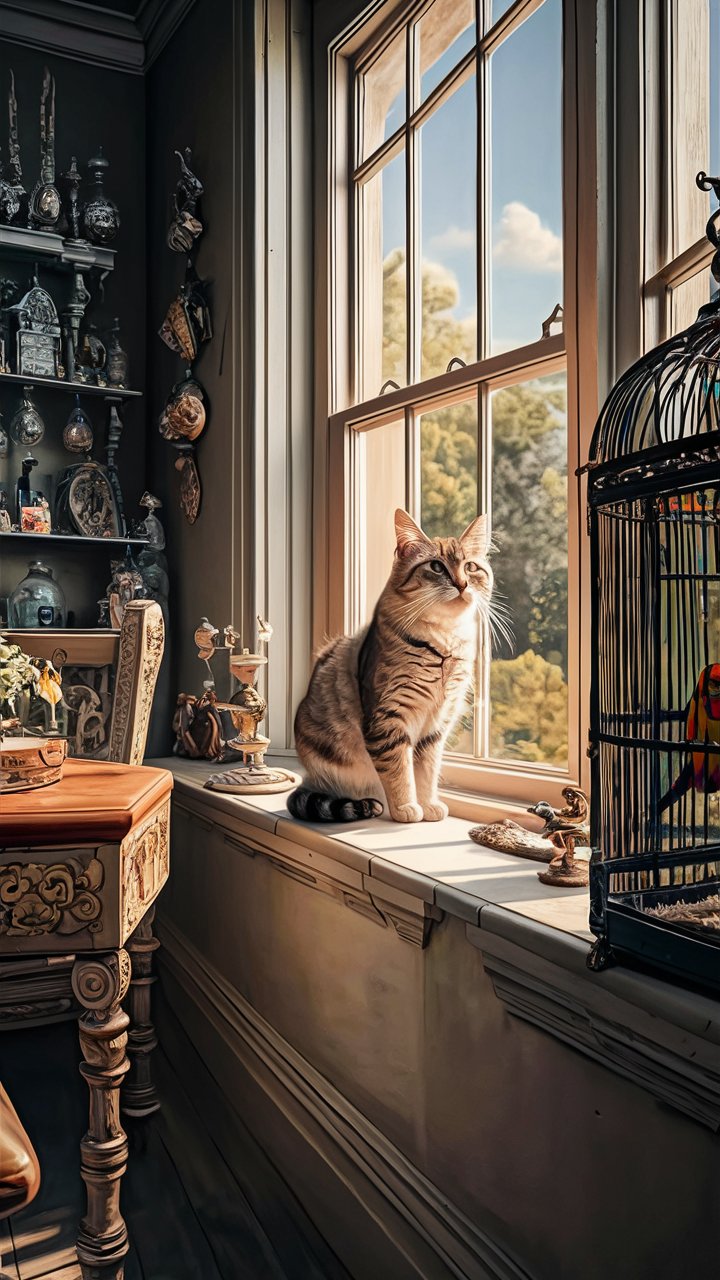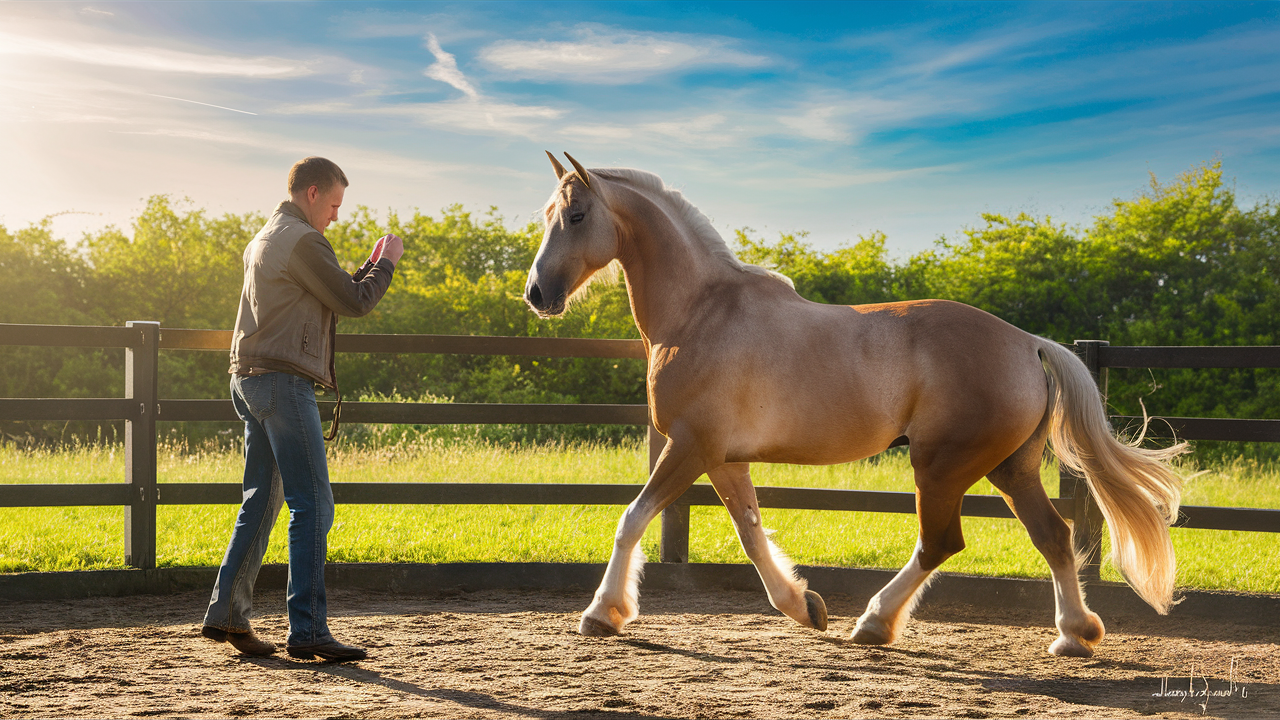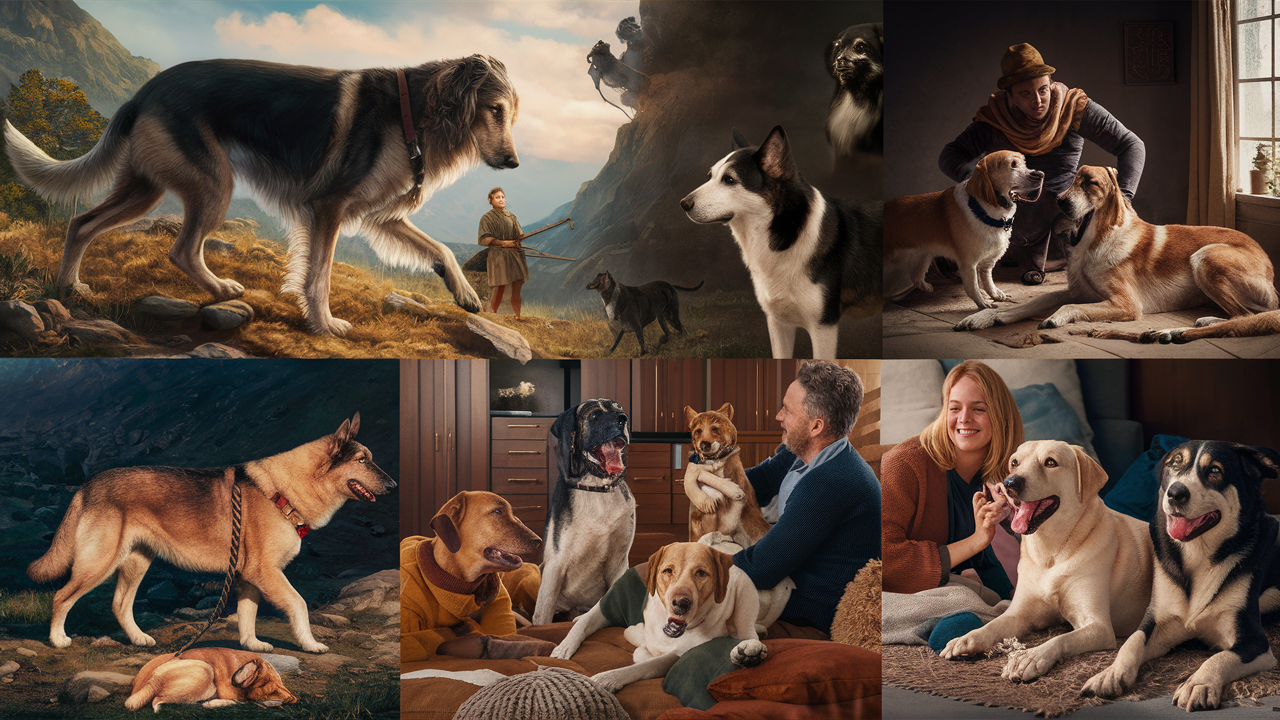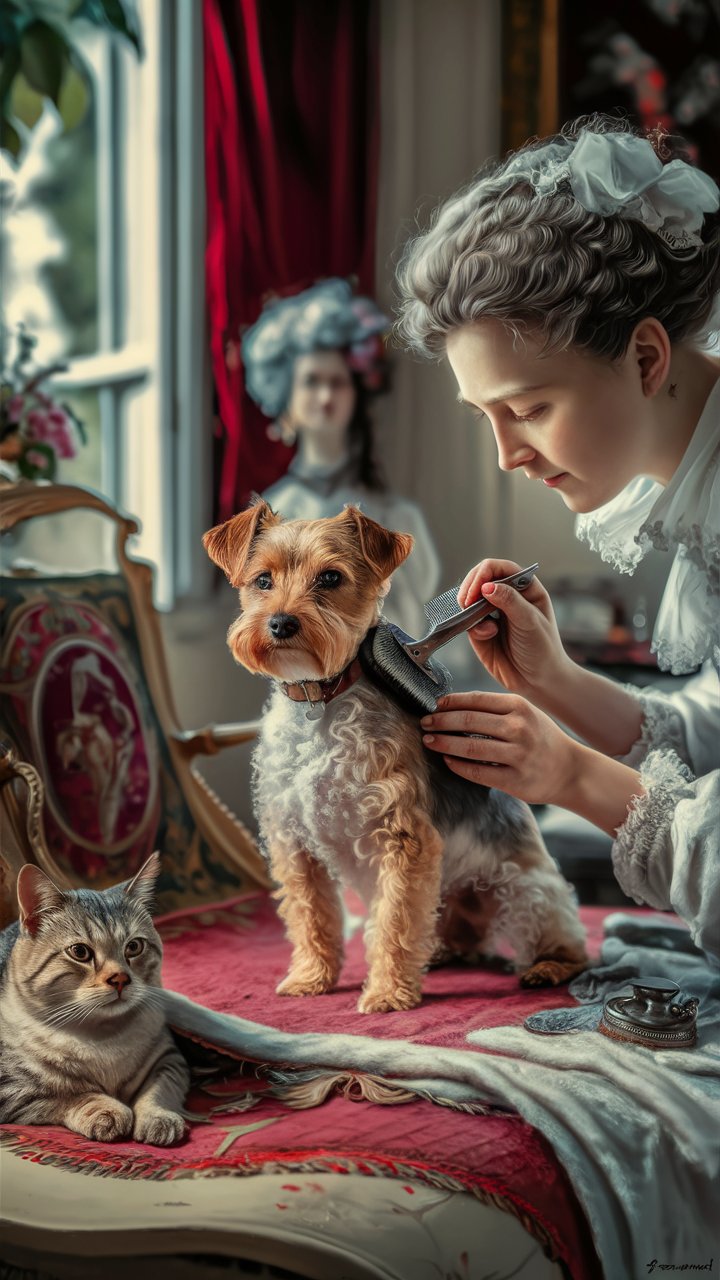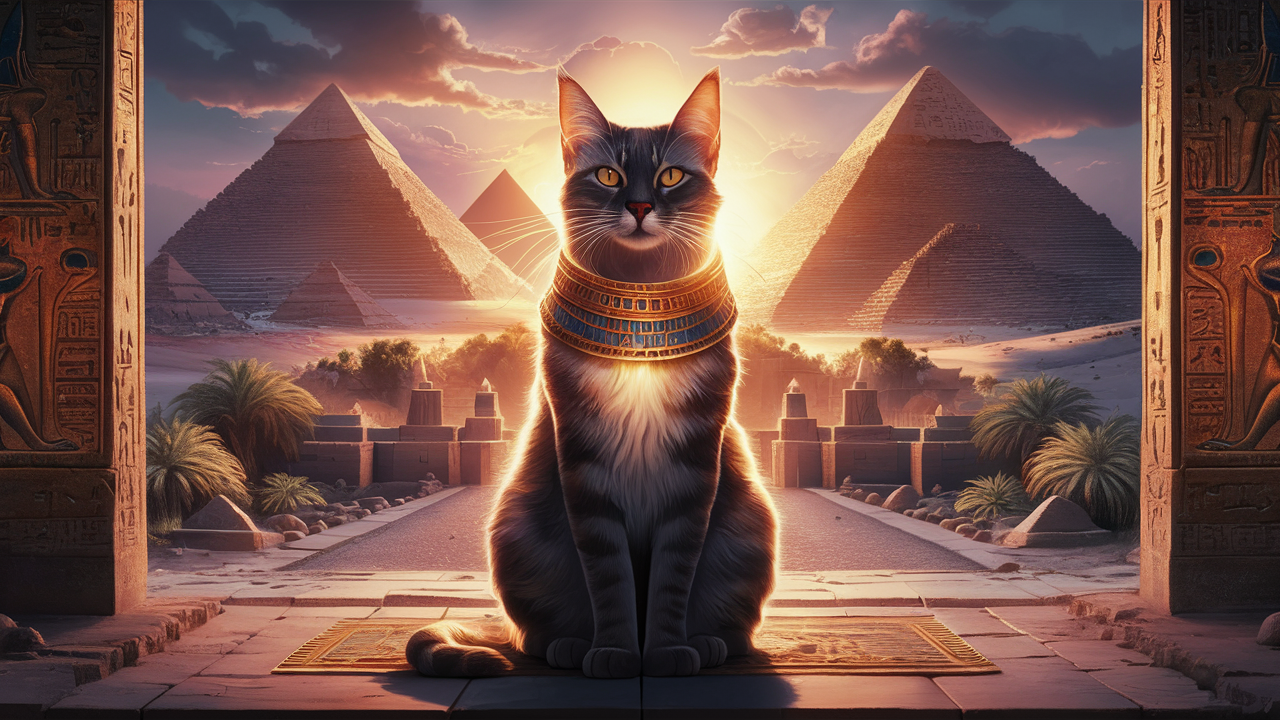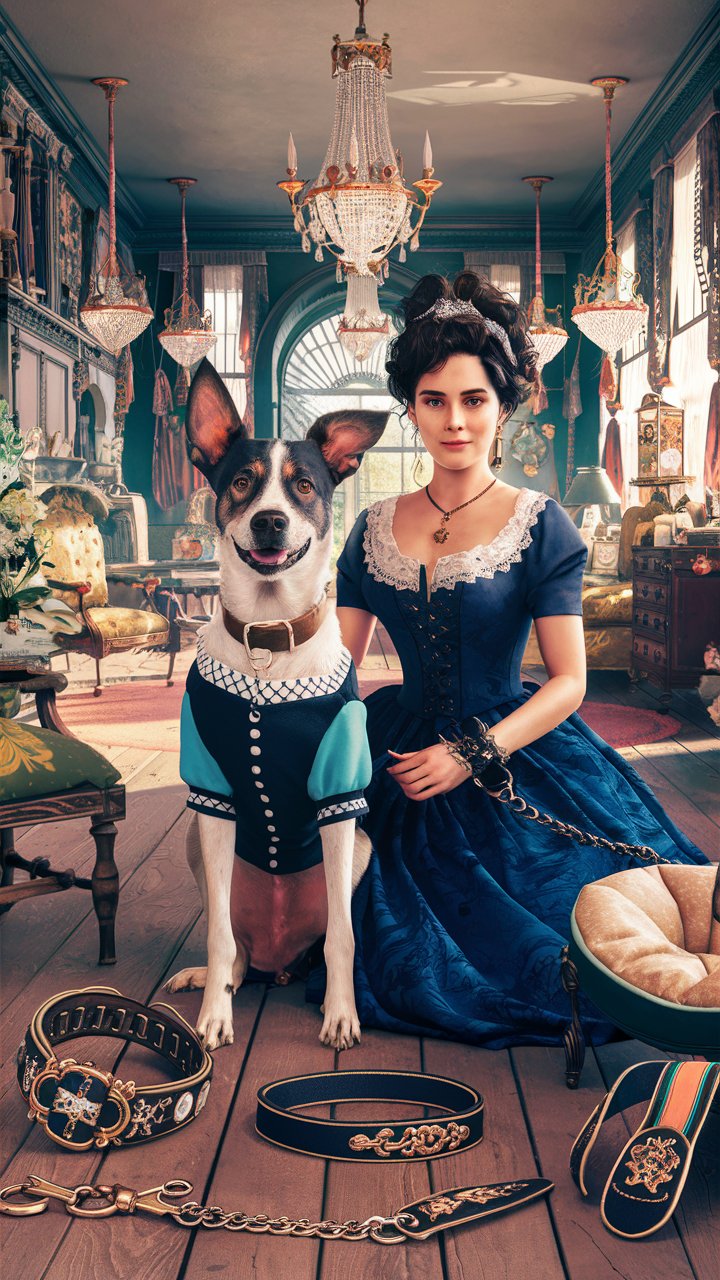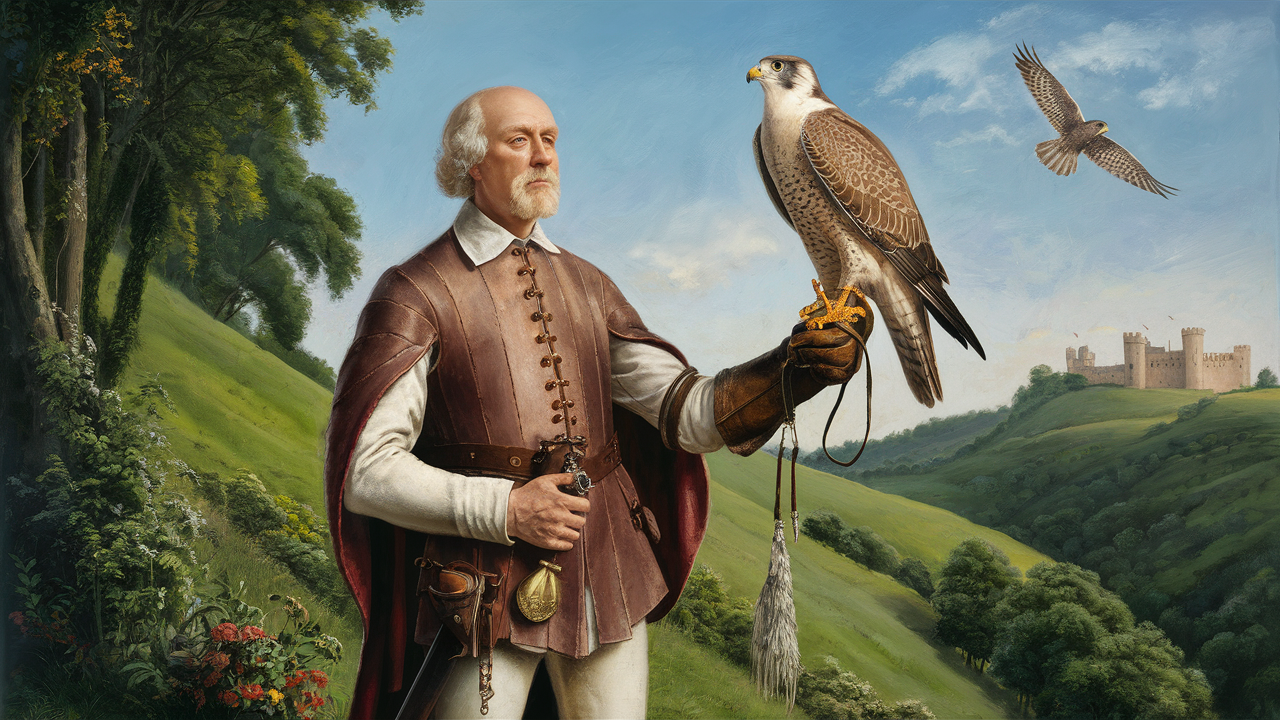Introduction
During the Victorian era, pets became cherished members of many households, symbolizing both companionship and social status. Queen Victoria herself was an avid animal lover, influencing the rise in popularity of pet keeping among the aristocracy and the middle class. This period saw significant changes in how people care for their pets, with a focus on furry friends like dogs and cats. Pets were no longer seen merely as working animals but as valued family members, reflecting the broader cultural values of Victorians.
The Victorians’ love for pets extended beyond common domestic animals to include exotic species, which were often seen as a sign of wealth and status. Pedigree dogs, in particular, became highly sought after, with breeds like Bulldogs and Terriers gaining significant popularity. This era also marked the beginning of organized pet insurance and the establishment of even pet cemeteries, highlighting the deep sentimental value placed on animals. The 19th century was truly a transformative period for pet keeping, shaping the way we view and treat our animal companions today.
Key Takeaways
- During the Victorian era, pets became cherished members of households, symbolizing companionship and social status.
- Queen Victoria‘s love for animals influenced the rise in popularity of pet keeping among the aristocracy and middle class.
- This period saw significant changes in how people care for their pets, focusing on furry friends like dogs and cats.
- Pedigree dogs and exotic pets were highly sought after, often seen as a sign of wealth and status.
- The era marked the beginning of organized pet insurance and the establishment of even pet cemeteries, highlighting the sentimental value placed on animals.
- The 19th century was a transformative period for pet keeping, shaping the way we view and treat our animal companions today.
Dogs as Companions in the Victorian Era
During the Victorian era, dogs became cherished members of many households, symbolizing both companionship and social status. Their presence was not just limited to the aristocracy but spread across various social classes. This period saw a notable rise in the popularity of keeping dogs as pets, reflecting the cultural values and changing lifestyles of the time. People began to see pets as essential companions in their daily lives. Dogs were no longer just working animals but beloved family members. Their roles evolved to include providing emotional support and joy to their owners. As a result, the Victorian era marked a significant shift in how society viewed and treated dogs.
Victorian Families and Their Dogs
Victorian households often included dogs as symbols of affection and loyalty. Their presence was deeply integrated into daily life, offering comfort and companionship, especially to women and children. Many households utilized dogs for their protective instincts, guarding homes against intruders. Additionally, some breeds, particularly those considered rare or exotic, were prized for showcasing wealth and status. Thus, dogs played a multifaceted role, embodying both practical and emotional significance in Victorian families. This cultural shift led to dogs being seen not only as pets but as integral parts of the family unit, reflecting the period’s changing attitudes towards animals and domestic life.
Popular Dog Breeds as Pets in the Victorian Era
Following the rise of dogs in Victorian households, certain breeds gained significant popularity. Terriers were loved for their energetic nature and agility, making them ideal for lively Victorian homes. Spaniels, known for their friendly demeanor and elegance, were favorites among many families. Bulldogs were valued for their steadfast loyalty and protective instincts. These breeds captured the hearts of many Victorians, reflecting their varying tastes and cultural roles during the era. The popularity of these breeds also highlighted the Victorians’ growing appreciation for the diverse qualities and characteristics of different dog breeds, further solidifying the dog’s place in society.
Cats and Other Pets in Victorian Parlors
During the Victorian era, pets played an important role in many households, adding charm and liveliness to everyday life. Beyond the popular dogs, Victorians also kept cats and a variety of other animals as pets. These animals were valued for both their practical uses and their companionship, reflecting the cultural values of the time.
Key Aspects of Victorian Pet Dog Keeping
Dog Fancy and Social Status: During the Victorian era, the concept of “dog fancy” emerged, with dog ownership becoming a symbol of social status and refinement. The first modern dog show in 1859 and subsequent shows in London solidified dogs’ place in elite society.
Health and Welfare Initiatives: The Victorian period saw the establishment of animal welfare organizations like the RSPCA in 1824, which advocated for the humane treatment of animals and marked the beginning of organized efforts to improve animal welfare.
Diverse Roles of Dogs: Dogs served multiple roles in Victorian homes, from companions and protectors to participants in hunting and sport. Their practical functions combined with their roles as loyal and affectionate family members.
Rise of Pedigree Breeding: The Victorian era popularized the breeding of pedigree dogs, with specific breeds like Bulldogs, Terriers, and Spaniels becoming highly sought after for their distinct characteristics and perceived purity.
Exotic and Unusual Pets: Alongside dogs, Victorians kept a variety of exotic pets, including squirrels, monkeys, and even owls. These unusual pets were often seen as status symbols and added an element of novelty to Victorian households.
The Role of Cats and Other Pets in Victorian Homes
Cats were particularly valued in Victorian parlors for their ability to keep homes free from pests. Their natural hunting skills made them effective at controlling mice and rats, which was especially useful in urban settings. Besides their practical use, cats provided quiet companionship and were appreciated for their independent yet affectionate nature. Other pets, such as birds and rabbits, added diversity and charm to Victorian households, showcasing the Victorians’ love for a variety of animals.
Other Popular Pets in Victorian Times
Alongside cats and dogs, Victorians enjoyed a variety of other pets that added liveliness to their homes. Birds, especially canaries and parrots, were commonly kept for their beauty and melodic songs, making them popular in many homes. Small mammals, like rabbits and guinea pigs, were also favored, particularly by children who enjoyed caring for and playing with them. The affluent often kept exotic animals, such as monkeys and tortoises, which served as status symbols and added a touch of the unusual to their living spaces. These pets enriched Victorian homes with their unique presence and characteristics, reflecting the era’s fascination with the natural world and exotic creatures.
Pet Care in the Victorian Era
During the Victorian era, as pet ownership became more widespread, proper care for pets gained significant importance. This included maintaining their hygiene, ensuring their health, and providing a suitable diet. Victorians took great pride in the well-being of their pets, reflecting the cultural values of the time.
Pet Grooming and Hygiene Practices
As Victorian pet ownership flourished, grooming and maintaining pets’ hygiene became important aspects of their care. Regular bathing was common, especially for dogs, to keep their coats clean and free from dirt. Brushing and combing were essential to prevent tangles and matting of fur, which was crucial for breeds with longer coats. Additionally, clipping and trimming dogs’ nails and fur helped prevent discomfort and potential infections. Victorian pet owners took pride in keeping their animals well-groomed, which was a reflection of their care and affection.
Victorian Pet Healthcare and Diet
Transitioning from grooming, ensuring pets’ health and proper diet was of paramount importance in Victorian households. Regular check-ups with veterinarians emerged as a standard practice, reflecting the growing awareness of animal health. For common ailments, many relied on traditional home remedies passed down through generations. Maintaining a balanced diet for pets was also a priority. Pets were often fed natural foods like fresh meat, grains, and vegetables. Some breeds even received tailored diets to meet their unique nutritional requirements. These practices ensured that Victorian pets led healthy, long lives, reflecting the Victorians’ commitment to their well-being.
“My doctrine is this, that if we see cruelty or wrong that we have the power to stop, and we do nothing, we make ourselves sharers in the guilt.” – Anna Sewell, Black Beauty (1877)
Victorian Pet Fashion and Accessories
During the Victorian era, the trend of accessorizing pets gained significant popularity. Pet owners indulged in various fashionable items for their beloved animals, reflecting the era’s emphasis on style and status. These accessories not only served practical purposes but also highlighted the social standing and aesthetic sensibilities of their owners.
Fashionable Accessories for Victorian Pets
Shifting from healthcare and diet, Victorian pet owners also indulged in fashionable accessories for their beloved animals. Accessorizing pets became a popular trend, reflecting the era’s focus on fashion and style. Elegantly designed collars and leashes, often made of leather and adorned with intricate metalwork, were common. Pets, particularly dogs, were sometimes decorated with ornate jewelry, highlighting their status and adding a touch of luxury. Additionally, comfortable and stylish pet beds made from luxurious fabrics catered to both practical needs and the desire to showcase pets as fashionable companions.
Trends in Pet Clothing During the Victorian Era
In addition to accessories, pet clothing became increasingly popular in Victorian society. Clothing for pets served both functional and aesthetic purposes. During colder months, pets were often dressed in specialized garments to keep them warm, ensuring their comfort and health. Custom-made outfits reflecting the latest fashion trends of the era were also common, allowing pets to mirror the fashionable lifestyles of their owners. For special occasions and social gatherings, pets donned formal attire, adding an element of sophistication and charm to events. These trends highlighted the Victorians’ penchant for dressing their pets as an extension of their own fashionable lifestyles.
Ethical Considerations in Victorian Pet Keeping
During the Victorian era, while pet fashion was flourishing, there was a growing concern for the welfare of animals. This period saw the emergence of several significant movements aimed at promoting kindness and proper treatment of animals. These movements reflected a growing public commitment to animal welfare and compassion, marking a significant progression in societal attitudes.
Animal Welfare Movements in the Victorian Era
Several important movements emerged during the Victorian era to promote the welfare of animals. One of the most notable was the establishment of the Royal Society for the Prevention of Cruelty to Animals (RSPCA) in 1824. This organization played a crucial role in advocating for the rights and humane treatment of animals. Additionally, the introduction of legislation aimed at protecting animal rights and preventing abuse highlighted the period’s commitment to animal welfare. Public awareness campaigns also became common, educating the populace about the importance of treating animals with kindness and respect. These initiatives were a testament to the era’s growing concern for animal welfare and the push towards more ethical treatment of pets.
Attitudes Towards Pet Ownership and Treatment
Building on the growth of animal welfare movements, Victorian attitudes towards pet ownership began to evolve. The public sentiment increasingly leaned towards viewing pets as valued family members rather than mere property. There was a greater emphasis on treating pets with kindness and responsibility, recognizing their rights to proper care and humane treatment. Educational efforts were also ramped up, with campaigns aimed at informing pet owners about the best practices in pet care. These shifting attitudes marked a significant progression in how Victorian society regarded their animal companions, reflecting a broader cultural shift towards compassion and responsibility in pet ownership.
[lasso rel=”amazon-12″ id=”5293″]
Conclusion
The Victorian era marked a transformative period in Britain for pet keeping, showcasing the evolution of pets from working animals to beloved family members. Queen Victoria‘s influence played a significant role in the popularity of dogs and cats, with pedigree dogs becoming highly sought after. The rise of animal welfare movements, including the establishment of the RSPCA, highlighted the growing public commitment to the humane treatment of animals. This era also saw the beginning of pet insurance and even pet cemeteries, emphasizing the sentimental value placed on animals.
Victorians took great pride in their pets, often adorning them with fashionable pets accessories and clothing that reflected the cultural values of the time. The introduction of veterinary care and the importance placed on pet hygiene further demonstrated the era’s dedication to animal welfare. Overall, the 19th century laid the foundation for how we care for and view our pets today, showing a remarkable shift in attitudes towards our furry friends.

